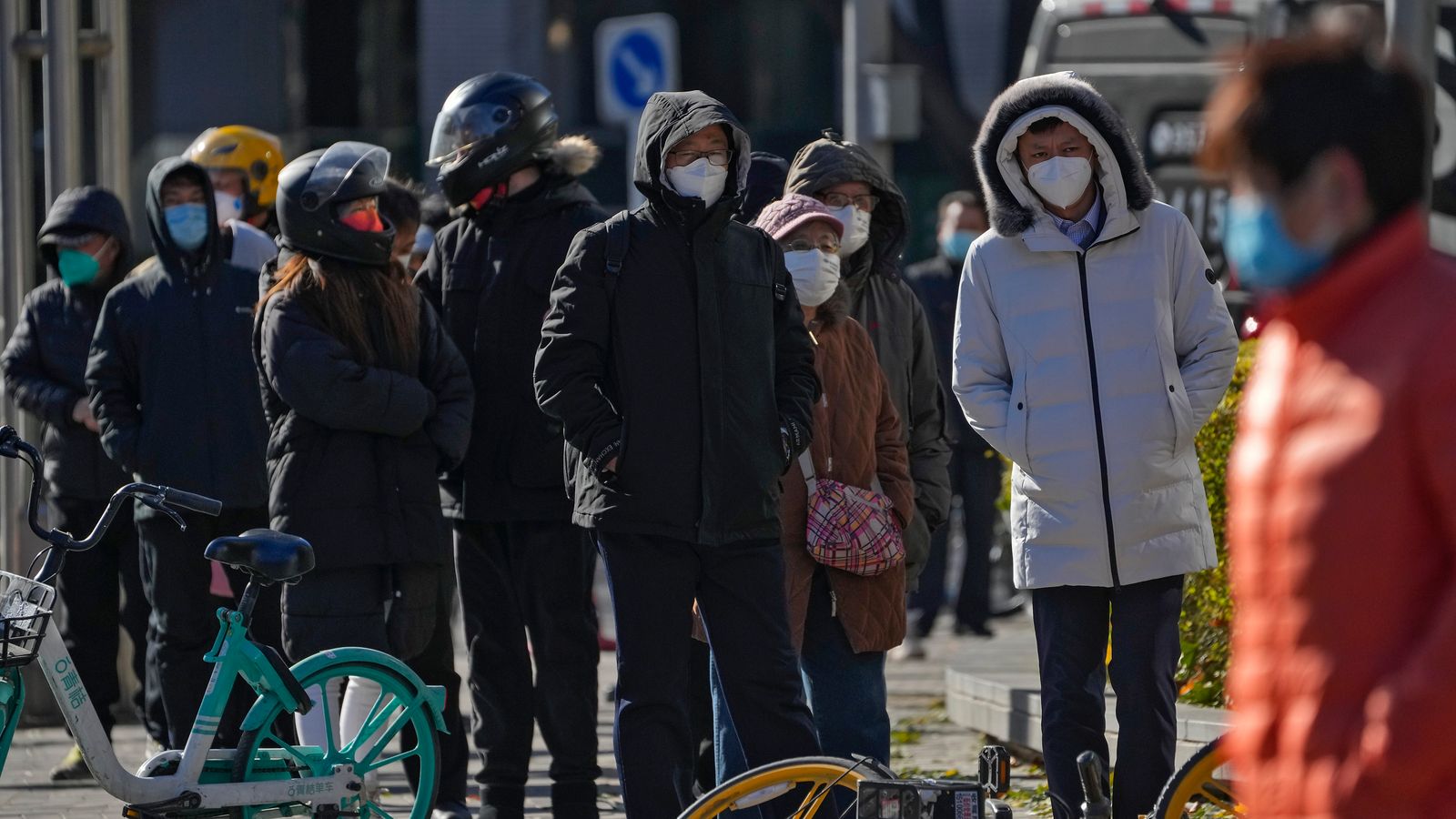Major Chinese cities have started to lift COVID lockdowns and ease restrictions following widespread protests over stringent zero-COVID policies.
Less than 24 hours after violent protests in Guangzhou, officials in at least seven districts of the sprawling port city north of Hong Kong announced they were lifting lockdowns.
One district on Wednesday said it would allow in-person classes in schools to resume and would reopen restaurants and other businesses including cinemas.
Authorities in the southwestern city of Chongqing said they would now allow close contacts of people with COVID-19, who meet certain conditions, to quarantine at home.
The “orderly” resumption of businesses, including supermarkets, gyms and restaurants was announced in Zhengzhou in central China, where there have been clashes at a huge Foxconn factory making iPhones, and an exodus of workers from the site frustrated by COVID curbs.
In rare scenes of open dissent, protests have flared across the country in response to COVID lockdowns and restrictions, including in the commercial hub of Shanghai and the capital Beijing.
People with mild coronavirus symptoms in east Beijing are now being allowed to self-isolate at home, according to new rules issued by community leaders.
Crowds in major Chinese city Guangzhou clash with riot police in hazmat suits over zero-COVID policy
China expands lockdowns as COVID cases soar to daily record high
China zero COVID: Beijing imposes negative coronavirus test requirement in all public places after cases rise
Another nearby neighbourhood is holding an online poll this week on the possibility of positive cases isolating at home.
“I certainly welcome the decision by our residential community to run this vote regardless of the outcome,” said resident Tom Simpson, managing director for China at the China-Britain Business Council.
He said his main concern was being forced to go into a quarantine facility, where “conditions can be grim to say the least”.
Read more:
On Chinese social media, America is being blamed for the protests
Why are people demonstrating?
Your questions on the protests answered
Please use Chrome browser for a more accessible video player
The softening stance follows quarantine protocols earlier in the year which saw entire communities locked down, sometimes for weeks, after even just one positive case was found.
National health officials said earlier in the week that China would respond to “urgent concerns” raised by the public and that COVID rules should be implemented more flexibly, according to the severity of outbreaks in each region.
Despite near-record case numbers, Vice Premier Sun Chunlan said on Wednesday the virus’s ability to cause disease was weakening, state media reported.
She also urged further “optimisation” of testing, treatment and quarantine policies.
It contrasts with earlier messages from authorities about the deadliness of the virus.
Click to subscribe to the Sky News Daily wherever you get your podcasts
Although the easing of some measures appears to be an attempt to appease the public, authorities have also started to seek out protesters, some who were at the Beijing protests told Reuters news agency.
“Police came to my front door to ask me about it all and get me to complete a written record,” a resident, who did not want to be identified, said.
Another said some friends who posted videos of protests on social media were taken to a police station and asked to sign a pledge they “would not do that again”.







